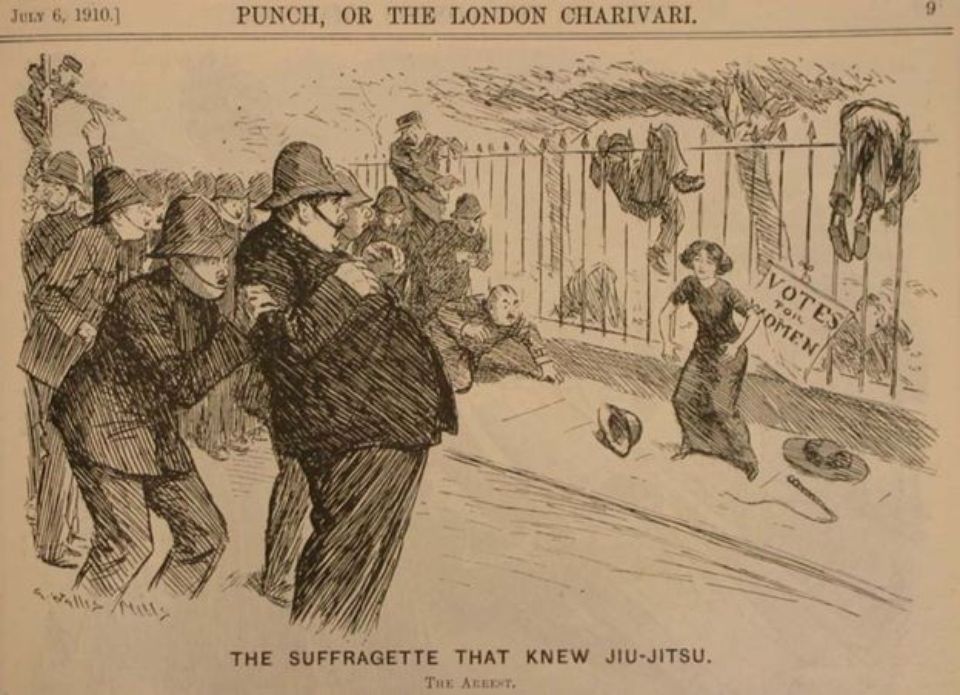★★★½
“Well-manicured fists of fury.”
In the years leading up to the Great War, the suffragette movement in Great Britain was one of the great social causes. Led by Emmeline Pankhurst, the Women’s Social and Political Union (WPSU) engaged in a campaign of protest and civil disobedience, intended to draw attention to their demand to give women the vote. Their actions were not without reaction by the authorities, however, with the activists frequently being harassed and arrested. To combat this, the WPSU established the “Bodyguard Society”, a group of women trained in self-defense, who could give as good as they got.
The preferred style was jiu-jitsu – or “Suffrajitsu” as it was nicknamed – which had arrived in Britain in the eighteen nineties, and the woman who taught it to the WPSU volunteers was Edith Garrud, who ran a school with her husband in London. Her role, and the talents of her pupils were clearly well-known by 1910, when the cartoon below appeared in satirical magazine Punch. As the struggle for votes increased in intensity over the coming year, the role of the Bodyguards in protecting the WPSU leaders increased. This reached a head in the infamous “Battle of Glasgow”, when a meeting in the Scottish city descended into violent disorder when local police tried to arrest Pankhurst.

This documentary tells the story of the Bodyguards, a facet of the movement somewhat overlooked in the historical record. It uses the standard documentary approach involving archival footage and a narrator (Bourne), but also contains re-enactments, both of interviews with actresses portraying Pankhurst (Miller), Garrud (Baker), etc. and some of the incidents described. The former generally prove rather more successful than the latter, because the film doesn’t have the budget to stage them credibly. For example, as depicted here, the Battle of Glasgow appears to have involved no more than half a dozen people, rather than 30 Bodyguards taking on 50 policemen (on a stage where the flower garlands were booby-trapped with barbed wire!).
On the other hand, the archival footage is fascinating and well-integrated, while the character interviews do a really good job of capturing the atmosphere of the time, and the passion of the suffragettes. [Though quite where the man playing the Glasgow Chief Constable gets his accent from, I’m less sure. It sounds like it was dredged from the bottom of the the Irish Sea, somewhere between Dublin and Scotland!] At 50 minutes, it’s a brisk watch, and I was left wanting to find out more about the topic, which is always a good indicator a documentary has done its job.
Credit goes to the makers for releasing the finished version online: you can check it out below. If you find your interest too has been piqued, Wolf has a website where you can satisfy that craving, including information on the graphic novel he authored, covering the same subject. While the suffragette movement largely took a back seat once the Great War started – proving women’s capabilities in ways protest marches could never hope to achieve – this shines an admirable light on an aspect which deserves to be better remembered.
Dir: Tony Wolf
Star: Debra Ann Miller, Lynne Baker, Lizzie Bourne, David Skvarla




